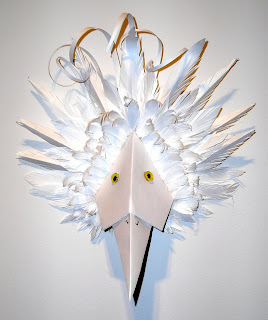

To imply means “to fold in” as in the “implication” of some thought expressed in a way that need only hint at its meaning to be understood. The “ply” part of the word in and of itself is interesting. I thought the first definition of "ply" would be something like “layer” or “slice”
Wikipedia, declares the order of denotation and connotation in this order:
* Ply (game theory)
* PLY (file format), the polygon data file format.
* Plying, the spinning technique to make yarn.
* A colloquialism for Plywood
* The different layers of toilet paper.
* Ply, a port or bay from Edwardian times.
* PLY, an implementation of lex and yacc parsing tools for Python.
* "Ply", DOS-based 16-bit complicated polymorphic virus from 1996
In games, a ply is a turn, as in a fold, or in Latin, “versa” as in verse, each line "turning" from one rhyme to another, from one image to the next. PLY is also a computer file format known as the Polygon File Format or the Stanford Triangle Format. The format was principally designed to store three dimensional data from 3D scanners. In weaving “to ply” is to spin or weave two separate strands together into one stronger thread, each ply being another doubling of the strands.
Not until the third connotation does Wiki list a layer, first as a colloquialism, then almost off-hand as toilet paper talk, leaving out the once notorious “four-ply” automobile tire. Finally, a nautical term from Edwardian times, and another two example of techno-lingo jargon.
For me, this is completely exemplary of a point I like to make about writing and thinking. IMHO, I believe that prose and poetry are two completely different ways of thinking and fundamentally different ways to communicate.
It is one reason that translation of poetry is the much more difficult than the translation of prose. The two exemplify the difference between walking and dancing, between painting a wall and painting a mural.
I was recently struck by how the two approach the use of words, with prose striving to “define” or “put limits on” thought, to be precise and “unambiguous.”
Poetry on the other hand seeks to free language of the simple denotation and play on the connotations, the other hidden layers of meaning: those folded in by time, like the Mona Deg that begins our week and the worship of the Sun God that ends it, or the broken calendar count of Julius and Augustus, the Caesar boys, lumping their names in with the gods and throwing off the count of the time we still keep as Pope Gregory instructed us, lo those centuries ago.
In origami, a flat, two-dimensional page is folded or plied into different shapes and forms. Cranes and dragons rise up into the third dimension, and indeed into the fourth as they take shape in the hands of the artist and then age in time, from a pristine color and edge, to one weighed down, even in its infinite lightness, by the gravity grave that history piles on daily, one dust grain at a time.

